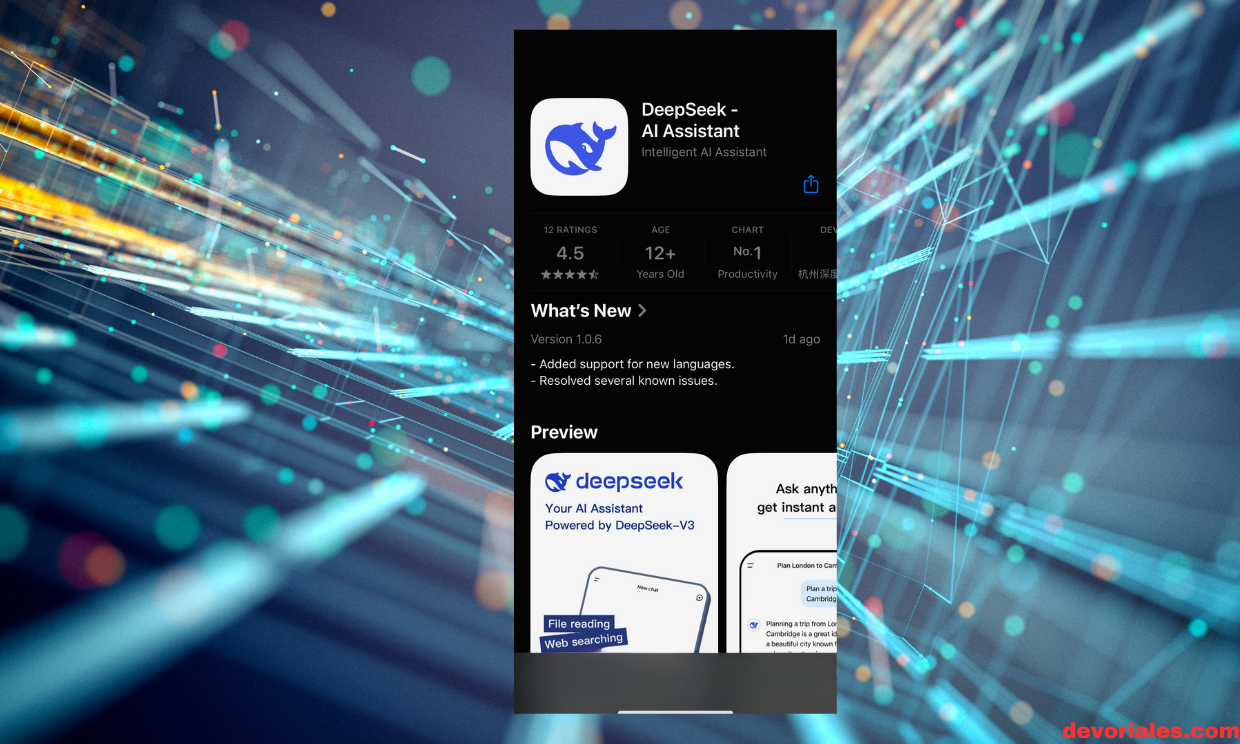
DeepSeek AI and the Question of the AI Bubble

DeepSeek AI, a Chinese AI model, is making waves across the global tech industry. With its performance rivaling OpenAI’s ChatGPT, Google's Gemini and others but at a fraction of the cost, it’s causing a lot of concern, particularly in the investment heavy U.S. tech landscape. As DeepSeek reshapes the conversation around AI efficiency and investment, questions emerge: Is this another bubble waiting to burst?
DeepSeek’s success is evident in its rapid ascent to the top of the App Store, surpassing heavyweights like ChatGPT and Meta’s Threads. But this rise hasn’t come without consequences. U.S. tech stocks have taken a hit, with giants like Nvidia, Microsoft, Google, and Tesla experiencing significant market declines.
DeepSeek’s ability to deliver comparable performance at just 5–10% of the cost has led many to question whether these investments were strategic or reflective of industry overconfidence.
The Impact of DeepSeek AI on U.S. Tech Stocks
What we have seen this week is, the major players like Nvidia, Microsoft, Google, and Tesla have seen their stock values tumble. For instance, Nvidia’s shares dropped by 16.5% in a single day, prompting investors to reevaluate their faith in the sector.
This trend highlights the vulnerability of the U.S. tech ecosystem, which has poured hundreds of billions of dollars into technologies such as AI chips, quantum computing, and nuclear-powered infrastructure. Now, with DeepSeek AI offering similar capabilities at 5-10% of the cost, many are questioning whether these investments were necessary or simply a result of industry overconfidence.
The Cost of AI: Necessary Investment or Investor Exploitation?
The astronomical costs associated with AI development are increasingly questioned. For example, companies like Microsoft, Meta, and Google have collectively invested billions in acquiring high-performance chips. Microsoft alone purchased 450,000 H100 chips in 2024. This expenditure reflects a staggering level of capital allocation, which some critics argue is being “stranded” on technology that may not yield proportionate returns.
DeepSeek’s efficiency—achieved through open-sourced optimization techniques like key-value compression and multi-token prediction has amplified this debate. By making its advancements freely available, China may be strategically undermining U.S. tech companies, reducing their competitive edge and defunding their momentum. The question arises: Are these costs inflated to extract money from investors, or are they genuinely necessary for innovation?
The Open-Source Strategy: A Tactic of Economic Disruption?
One of the most compelling aspects of DeepSeek’s strategy is its open-source model. By democratizing access to its technology, DeepSeek has lowered the entry barriers for developers while simultaneously devaluing proprietary AI solutions from U.S. firms. This mirrors tactics previously seen when Facebook open-sourced its LLaMA language model to challenge OpenAI.
Had China kept DeepSeek’s technology closed, U.S. companies might have continued to secure massive funding, prolonging their dominance. Instead, this open approach has triggered a reallocation of capital, with many investors questioning the viability of further large-scale investments in proprietary AI models.
The Broader Implications for AI and Investment
The ripple effects of DeepSeek’s rise extend beyond AI. Meta’s internal panic, including the formation of a war room to address DeepSeek’s impact, underscores the industry’s anxiety. Reports suggest that the cost of training DeepSeek is less than the salaries of top executives in Meta’s AI division. This imbalance raises uncomfortable questions about the sustainability of AI spending and the future of tech leadership.
Even Apple, which has limited its AI exposure, has felt the effects of this shifting landscape. While its stock remains a defensive pick for some investors, its iPhone sales in China have dropped significantly, further illustrating the challenges of global competition.
Are We in an AI Bubble?
The emergence of DeepSeek AI challenges the narrative of ever-increasing AI costs and investments. Its success has exposed potential inefficiencies in the current approach to AI development, leaving many to wonder whether U.S. tech companies have overplayed their hand.
As the AI landscape evolves, investors must carefully weigh the costs and benefits of supporting proprietary systems versus embracing open-source alternatives. The question remains: Are these massive investments driving genuine innovation, or are they merely a way to capitalize on investor enthusiasm? Only time will tell if the AI bubble will burst or reshape the industry for the better.
What are your thoughts on DeepSeek AI and its implications for the tech sector?